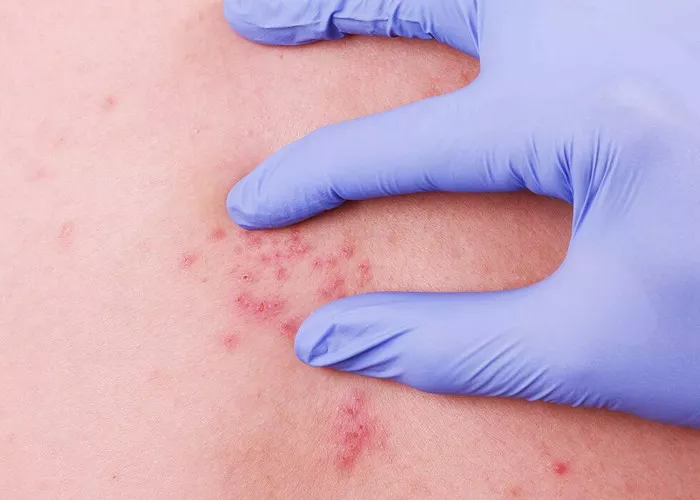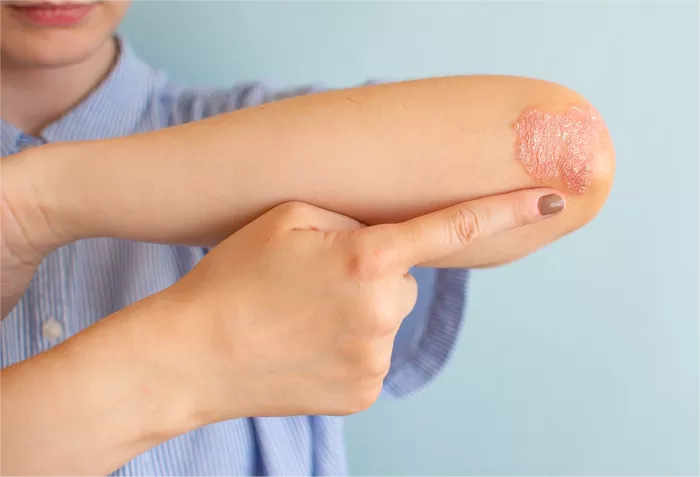Shingles, also known as herpes zoster, is a viral infection caused by the varicella-zoster virus (VZV), which is the same virus responsible for chickenpox. If you’ve had chickenpox, the virus lies dormant in your nerve cells and can reactivate later in life as shingles. One of the main concerns with shingles is its contagiousness, particularly in relation to surfaces and objects that come into contact with the virus. Understanding how long shingles remains contagious on surfaces is crucial to preventing the spread of the virus, especially to those who are susceptible, such as individuals who have never had chickenpox or the chickenpox vaccine, and those with weakened immune systems.
In this article, we’ll break down everything you need to know about how long the shingles virus can survive on surfaces, the risks involved, and how to protect yourself and others from transmission.
What Is the Shingles Virus?
Shingles occurs when the varicella-zoster virus (VZV), which initially causes chickenpox, reactivates after lying dormant in the body’s nerve tissues. It usually appears as a painful rash, often in a stripe or band around one side of the torso, face, or other parts of the body. The rash is accompanied by blisters that eventually burst, scab over, and heal.
Shingles is most contagious when the rash is in its blistering stage, as the fluid inside these blisters contains the virus. Once the blisters dry out and form scabs, the contagious period typically ends. However, the question remains: How long can the virus remain viable on surfaces or objects after contact?
How Does the Shingles Virus Spread?
The primary method of transmission for shingles is through direct contact with the fluid from the blisters of an infected person. However, the virus can also spread indirectly, though this is less common. Here’s how:
Direct Contact: If someone touches the fluid from the blisters or the rash of an infected person, they may contract the virus. This can occur if you come into close contact with an infected individual, such as by touching their rash or by touching contaminated items that have been in contact with the rash.
Indirect Contact: The virus can theoretically be spread when a person touches a surface, object, or item contaminated with the virus and then touches their mouth, eyes, or an open wound. However, the risk of indirect transmission through surfaces is much lower than direct contact with an infected rash.
How Long Does the Shingles Virus Live on Surfaces?
The survival time of the shingles virus on surfaces varies depending on several factors, including the type of surface, temperature, and humidity. Generally speaking, the varicella-zoster virus is more fragile than some other viruses, such as influenza or cold viruses, which can survive for several days on hard, non-porous surfaces.
On Hard Surfaces: Shingles virus can survive on hard, non-porous surfaces like countertops, doorknobs, and bathroom fixtures for a limited amount of time, typically from a few hours to a day. The virus may not survive long enough to pose a significant risk unless it is directly in contact with the infected person’s blister fluid, and the virus hasn’t dried out yet.
On Soft Surfaces: On soft materials such as towels, clothing, and bedding, the shingles virus is likely to survive for a shorter period. This is because moisture can cause the virus to break down faster, and these items are often washed regularly, which helps to reduce the chances of spreading the virus.
Environmental Conditions: Heat and humidity can also affect how long the virus survives. Warmer and more humid conditions can lead to quicker degradation of the virus. In contrast, dry and cooler environments might allow the virus to survive a little longer.
In most cases, the virus is unlikely to survive on surfaces for more than a few hours to a day. However, proper cleaning and hygiene practices can help minimize the risk of transmission.
How Can You Prevent the Spread of Shingles on Surfaces?
While shingles is primarily spread through direct contact with the rash, it’s still important to maintain proper hygiene and cleanliness to avoid indirect transmission. Here are some tips to reduce the risk of the virus spreading via surfaces:
Clean and Disinfect Frequently Touched Surfaces: Regularly disinfect commonly touched surfaces in your home, such as doorknobs, light switches, countertops, and bathroom fixtures. Use a disinfectant that is proven to kill viruses and bacteria, such as bleach-based cleaners or alcohol wipes (containing at least 70% alcohol).
Wash Your Hands Often: Frequent handwashing is one of the best ways to prevent the spread of any infectious disease, including shingles. Wash your hands with soap and water for at least 20 seconds, especially after touching the rash or any items that may have come into contact with the rash.
Avoid Sharing Personal Items: Avoid sharing towels, washcloths, razors, or bedding with someone who has shingles. These items can easily become contaminated with the virus and increase the chances of spreading it to others.
Wear Gloves or Cover the Rash: If you need to touch the shingles rash or apply medications to the affected area, wear disposable gloves. This helps prevent the virus from spreading to other surfaces. You can also cover the rash with a loose, non-stick bandage to further limit exposure.
Dispose of Contaminated Items Carefully: If you’ve used an item, such as a tissue or bandage, to cover or treat the rash, dispose of it immediately in a sealed plastic bag to prevent others from coming into contact with it.
Use a Separate Bathroom (if possible): If you have access to a separate bathroom, use it during the active stages of your shingles infection to avoid contaminating shared spaces.
How Long Should You Stay Away from Others While Contagious?
Shingles is contagious from the time the rash develops until the blisters have scabbed over. Typically, this can last anywhere from 7 to 10 days. Once the rash has dried up and crusted over, the person is no longer contagious.
If you’re caring for someone with shingles, or if you have shingles yourself, it’s important to follow these guidelines:
Avoid Contact with Vulnerable People: People who have never had chickenpox or the chickenpox vaccine, pregnant women, newborns, and individuals with weakened immune systems (such as those undergoing chemotherapy or taking immunosuppressive drugs) are at higher risk of contracting the virus. These individuals should avoid direct contact with someone who has shingles until the blisters are completely scabbed over.
Stay Home Until Healed: If you have shingles, it’s a good idea to stay home and avoid contact with others, especially those at high risk, until the rash has healed and scabbed over. This reduces the risk of spreading the virus.
Can the Shingles Virus Spread Through Airborne Particles?
Unlike chickenpox, which can be spread through the air via respiratory droplets, shingles does not spread through airborne particles. The virus is primarily transmitted through direct contact with the fluid in the blisters. Therefore, the risk of contracting shingles by being in the same room as someone who has the infection is minimal unless there is direct physical contact with the rash.
Can You Get Shingles from Surfaces?
While the shingles virus can survive on surfaces for a short period, getting infected by touching a contaminated surface is relatively rare. Most cases of shingles transmission occur through direct contact with the infected rash. However, it’s still important to practice good hygiene to minimize any possible risk.
Conclusion
To summarize, the shingles virus can survive on surfaces for a limited period, typically ranging from a few hours to a day, depending on the surface type and environmental conditions. The greatest risk of spreading shingles comes from direct contact with the infected rash or blister fluid, not from surfaces. However, it’s essential to maintain cleanliness by disinfecting commonly touched surfaces, washing your hands frequently, and avoiding contact with individuals who are at higher risk of complications from the virus.
By understanding how the shingles virus spreads and taking proper precautions, you can help prevent its transmission and protect yourself and others from this painful and contagious condition. If you or someone you know is experiencing shingles, consult a healthcare provider for the best course of treatment and advice on preventing the spread of the virus.
Related topics:


























